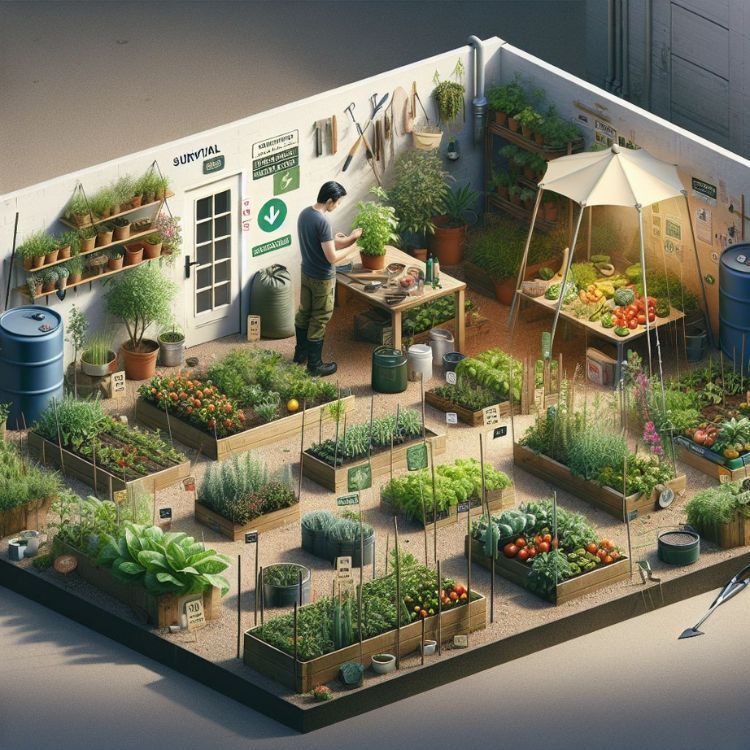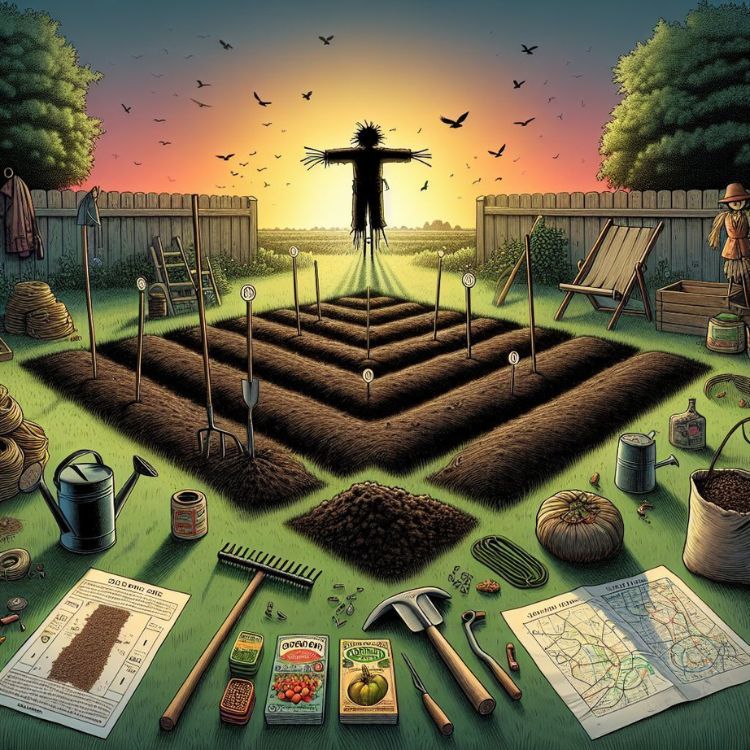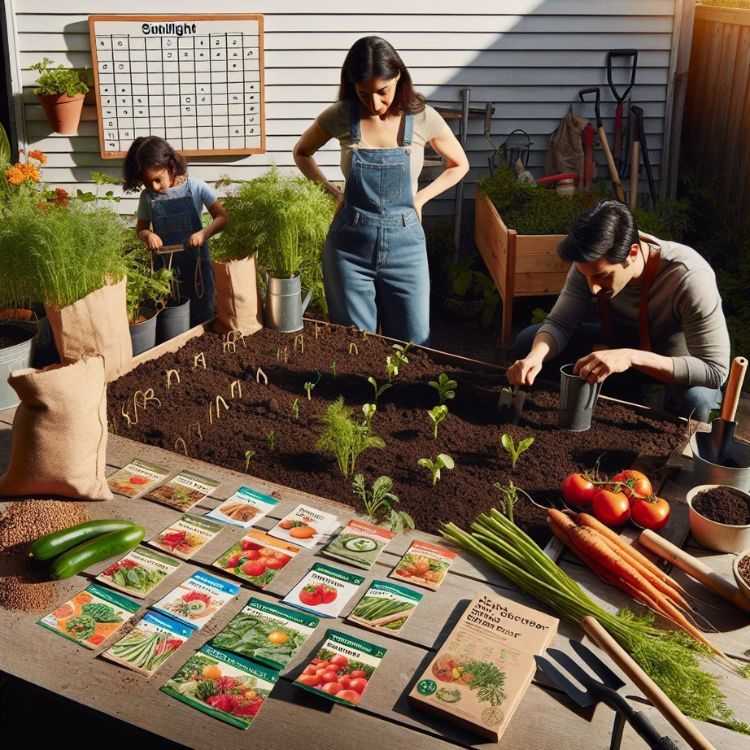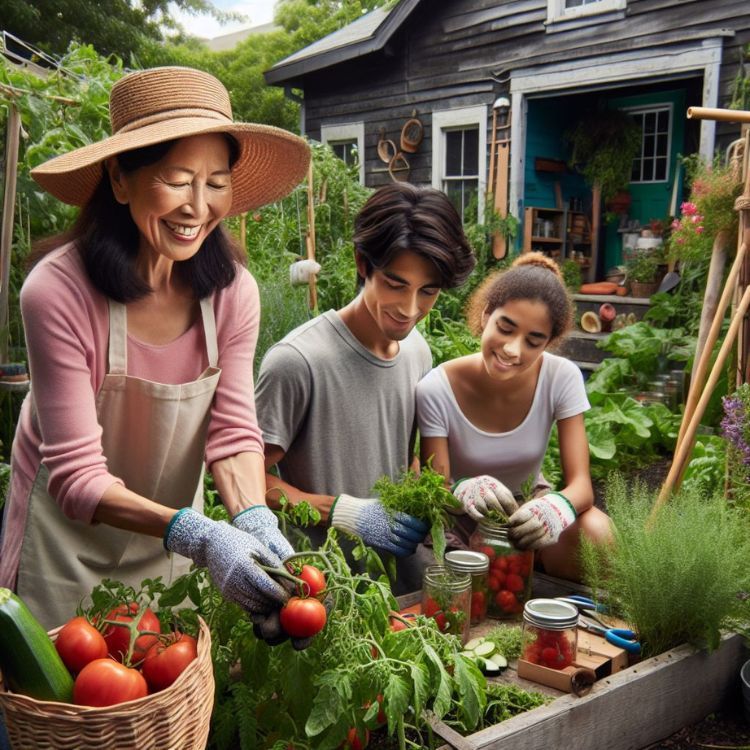
Key Takeaways
- Anyone can start a survival garden; a green thumb is not a prerequisite.
- Choosing the right location and understanding your climate are the first steps to success.
- Start with easy-to-grow plants and gradually expand your garden as you learn.
- Soil preparation is key to providing a healthy foundation for your plants.
- Embrace trial and error as a natural part of the gardening journey.
Debunking the Green Thumb Myth
Let’s get one thing straight: the idea that only certain ‘chosen ones’ can grow a flourishing garden is just a myth. In fact, survival gardening is for everyone, and it’s a skill that can be honed with patience and practice. So, if you’ve ever felt intimidated by the notion of not having a green thumb, it’s time to shake off that doubt and get your hands dirty—literally.
Understanding the Fundamentals of Survival Gardening
Survival gardening is all about growing your own food with the aim of self-sufficiency and preparedness. It’s not just about having a pretty space; it’s about cultivating a productive and resilient garden that can provide for you and your loved ones in times of need. And the good news? It’s something that can be learned and mastered over time, regardless of your starting point.
Re-defining Success in the Garden
Success in the garden isn’t about yielding a perfect crop every time; it’s about learning, adapting, and growing—both as a gardener and in your garden. It’s about celebrating the small victories, like your first sprout or your first harvest, and not getting discouraged by the inevitable setbacks.
First Steps to Take when Starting Your Survival Garden

Embarking on your gardening journey begins with a few critical first steps. These foundational decisions will set the stage for a garden that’s not only bountiful but also manageable and enjoyable. For a deeper dive into what these steps entail, consider exploring the essentials of survival gardening essentials.
Selecting the Right Location
Most importantly, your survival garden needs sunlight—lots of it. Find a spot that gets at least six hours of direct sunlight daily. Accessibility to water and protection from strong winds are also factors to consider. A level spot is ideal, but if you’re working with a slope, make sure it faces south for maximum light exposure.
Choosing Plants for Your Climate and Skill Level
Because your garden has to thrive under your specific conditions, choose plants that are well-suited to your climate. Start with hardy varieties known for their resilience and ease of care. Here are a few to consider:
- Tomatoes
- Zucchini
- Peppers
- Green beans
- Carrots
These plants are forgiving for beginners and can provide a confidence boost as you watch them grow.
Soil Preparation Basics
Healthy soil equals healthy plants. Begin by loosening the soil and enriching it with compost or aged manure. This will improve drainage and provide nutrients. Test the pH level and adjust accordingly—most vegetables thrive in soil with a pH between 6.0 and 7.0. Remember, soil preparation is an investment in your garden’s future productivity.
Essential Gardening Techniques for Beginners
As a beginner, mastering a few essential gardening techniques will set you up for success. First, learn how to properly plant seeds or seedlings. This involves knowing the right depth and spacing for each plant, which you can find on seed packets or plant tags. Consistent watering is crucial, especially in the seedling stage, to keep the soil moist but not waterlogged.
Next, focus on mulching. Mulch helps to retain moisture, suppress weeds, and regulate soil temperature. Organic mulches like straw or wood chips can also add nutrients to the soil as they decompose. Another vital technique is learning to identify and manage common pests and diseases early on. Vigilance and prompt action can save your crops from significant damage.
Adapting Your Approach as Seasons Change
Adaptability is key in survival gardening. As seasons change, so should your gardening practices. In spring, start with cool-season crops like lettuce and peas. As summer approaches, transition to warm-season crops like tomatoes and cucumbers. Be mindful of the first and last frost dates in your area to protect your plants.
Moreover, as autumn rolls in, it’s time to plant fall crops and consider cold frames or greenhouses if you want to extend the growing season. Winter is the perfect time for planning next year’s garden, ordering seeds, and repairing tools.
Example: My neighbor, an avid gardener, adjusts her planting schedule each year based on the Farmer’s Almanac and local weather predictions. She successfully harvests vegetables year-round by using season extenders like row covers and cold frames.
These timely adjustments ensure a continuous harvest and prevent crop losses due to unexpected weather changes.
Maximizing Your Survival Garden’s Potential

To truly maximize your garden’s potential, you need to go beyond the basics. This means optimizing every aspect of the gardening process, from soil health to plant productivity.
Efficient Watering Strategies
Watering might seem simple, but efficient watering can make a huge difference in your garden’s health and yield. The goal is to water the roots, not the leaves, which can lead to fungal diseases. Drip irrigation systems or soaker hoses are excellent investments as they deliver water directly to the soil and reduce water waste.
Organic Pest Control Methods
Organic pest control is crucial in a survival garden where the health of your soil and plants is paramount. Introduce beneficial insects like ladybugs or lacewings to naturally control pest populations. You can also use neem oil or insecticidal soaps to manage outbreaks. Here’s a simple organic pest control regimen:
- Regularly inspect plants for signs of pests or disease.
- Introduce or attract beneficial insects to your garden.
- Use barriers like row covers to protect plants from pests.
- Apply organic pesticides sparingly and as a last resort.
Preventative measures and natural remedies are often the best course of action for maintaining a healthy garden ecosystem.
Companion Planting and Crop Rotation
Companion planting involves placing plants together that benefit each other, whether through pest control, pollination, or nutrient uptake. For example, planting marigolds among your vegetables can deter nematodes and other pests. Crop rotation, on the other hand, means not planting the same crop in the same spot each year to prevent soil depletion and disease buildup.
Here’s how you might rotate crops in a four-bed garden over four years:
- Year 1: Bed 1 – Tomatoes, Bed 2 – Leafy Greens, Bed 3 – Root Vegetables, Bed 4 – Legumes
- Year 2: Rotate each crop to the next bed in the sequence.
- Year 3: Continue the rotation.
- Year 4: Complete the rotation, then start over.
This rotation system helps maintain soil fertility and reduces the likelihood of pest and disease problems.
Harvesting and Preserving Your Bounty

Harvesting at the right time ensures the best flavor and nutritional content. Most vegetables are best harvested in the morning when their water content is highest. Learn the signs of ripeness for each crop, such as the rich color of a tomato or the size of a zucchini.
Preserving your harvest allows you to enjoy the fruits of your labor throughout the year. Canning, freezing, drying, and fermenting are all effective methods to extend the shelf life of your produce. Here are some quick tips for preserving different types of produce:
The Best Times to Harvest for Maximum Yield
Harvest leafy greens before they bolt, or go to seed, which can cause a bitter taste. Root vegetables like carrots and beets can be left in the ground until needed, as long as the ground doesn’t freeze. For fruits like tomatoes and peppers, wait until they reach full color for the best flavor.
Regular harvesting often encourages plants to produce more, so don’t be shy about picking your vegetables when they’re ready. Learn more about high-yield survival garden layouts for year-round productivity.
Preserving Techniques for Long-Term Storage
For canning, use a water bath for high-acid foods and a pressure canner for low-acid foods to ensure safety. Freezing is excellent for berries, beans, and peas, while drying works well for herbs and peppers. Fermenting not only preserves your vegetables but also adds beneficial probiotics.
Seed Saving for Future Planting
Saving seeds from your best-performing plants means you can cultivate a garden that’s increasingly adapted to your specific conditions. Allow some of your plants to go to seed, then harvest and store the seeds in a cool, dry place. Be sure to label them with the plant type and date of collection.
Staying Motivated and Inspired
Gardening is a journey, and like any journey, it can have its ups and downs. Set realistic goals for your garden, and celebrate when you reach them. Connect with other gardeners in your community or online to share tips and encouragement. And remember, each challenge is an opportunity to learn and grow.
Embrace the rewards that come with gardening, like fresh air, physical activity, and the satisfaction of eating food you’ve grown yourself. It’s these moments that make all the hard work worthwhile.
Setting Realistic Goals
When you start a survival garden, it’s easy to get carried away with ambitious dreams of self-sufficiency. However, it’s vital to set realistic goals that align with your resources, time, and experience. Start small—perhaps with a few containers or a modest raised bed—and expand as you gain confidence and knowledge.
Connecting with Other Gardeners
One of the most enriching aspects of gardening is the community you can build. Whether it’s a local gardening club, online forums, or social media groups, connecting with other gardeners can provide invaluable support. You’ll exchange tips, seeds, and even the fruits of your labor. This camaraderie can be incredibly motivating, especially when challenges arise.
Embracing the Rewards and Challenges of Gardening
Gardening is a rewarding endeavor, but it’s not without its challenges. Pests, weather, and unexpected setbacks can test your resolve. Yet, the taste of a freshly picked tomato or the sight of your garden thriving is incomparable. Embrace both the good and the bad, and you’ll find that gardening enriches your life in more ways than one.
Frequently Asked Questions (FAQ)
As you delve into the world of survival gardening, questions are bound to arise. Let’s tackle some of the most common queries to help you get started on the right foot.
What Are the Most Essential Tools I Need to Start Gardening?
To begin your gardening journey, you’ll need a few basic tools:
- A sturdy trowel for planting and weeding
- Pruning shears for trimming and harvesting
- A garden fork or spade for turning soil
- Gloves to protect your hands
- A watering can or hose with a gentle nozzle
These tools will serve you well as you start planting and maintaining your survival garden.
How Can I Garden if I Have Limited Space?
Space constraints don’t mean you have to give up on gardening. Here’s how you can make the most of a small area:
Container gardening is an excellent option for those with limited space. Pots, buckets, and even hanging baskets can be used to grow a variety of plants.
Vertical gardening is another space-saving technique. Utilize trellises, wall planters, or shelves to grow upwards rather than outwards.
Consider community gardens where you can rent a plot and benefit from shared resources.
With creativity and flexibility, you can cultivate a thriving garden in even the smallest of spaces.
Example: My friend lives in an apartment with a small balcony, yet she grows a variety of herbs, cherry tomatoes, and peppers using a combination of hanging baskets and railing planters.
Is it Possible to Garden on a Balcony or Terrace?
Absolutely! Balcony and terrace gardening is a fantastic way to grow your own food in an urban setting. Choose containers that fit your space and make sure they have adequate drainage. Opt for dwarf or compact varieties of plants that are suited to container living. With the right setup, you can enjoy a lush, productive garden right outside your door.
What Should I Do If My Plants Start Dying?
First, don’t panic. Plants can be remarkably resilient. Assess the situation—check for signs of pests, disease, or water stress. Make adjustments as needed, such as changing your watering routine, moving the plant to a better location, or treating for pests with organic methods. Often, a small change can make a big difference.
Remember that some loss is natural, especially for a beginner. Learn from each experience, and don’t be discouraged. Gardening is a journey of continuous learning.
Consulting with more experienced gardeners or doing a bit of research on urban survival garden tips can also provide solutions to help save your plants.
How Do I Manage Garden Pests Naturally?
Managing pests in an eco-friendly way is crucial for a healthy survival garden. Here are some strategies:
- Encourage beneficial insects that prey on pests.
- Use physical barriers like netting or row covers to protect plants.
- Plant pest-repelling plants like marigolds or garlic around your garden.
- Make DIY sprays with ingredients like neem oil or soap.
Regularly inspecting your plants for early signs of pests can help you address issues before they escalate.
With these tips and a bit of patience, you can manage pests in a way that’s safe for both your plants and the environment.
In conclusion, survival gardening is a fulfilling and practical skill that anyone can develop. It’s not about having a green thumb; it’s about dedication, learning, and adapting to your unique circumstances. So go ahead, get your hands in the soil, and start growing your own piece of resilience and independence.
And remember, for a wide selection of heirloom seeds that can help kickstart your survival garden, be sure to check out the offerings at Survival Essentials. With quality seeds and the right approach, your garden will be thriving in no time!






